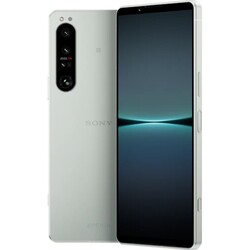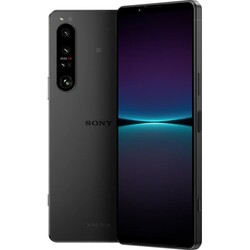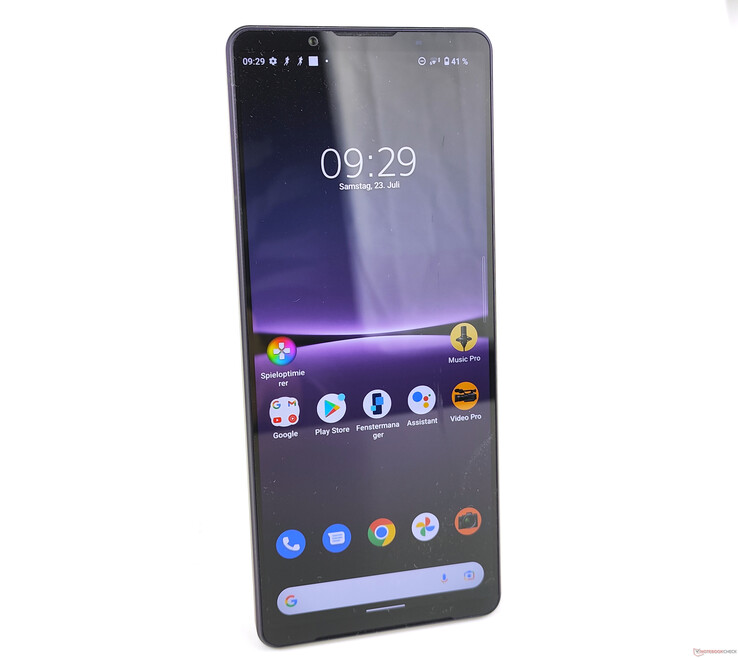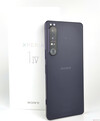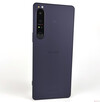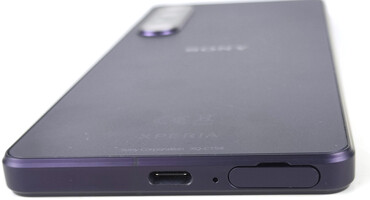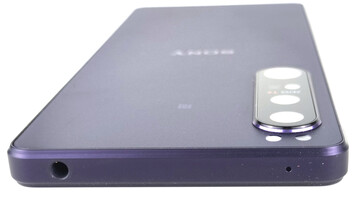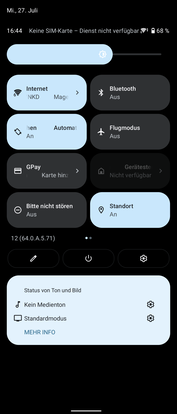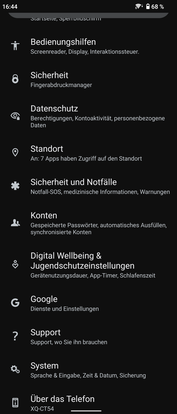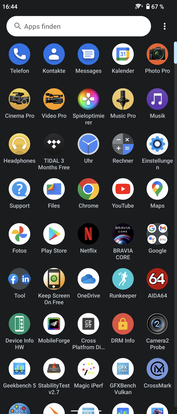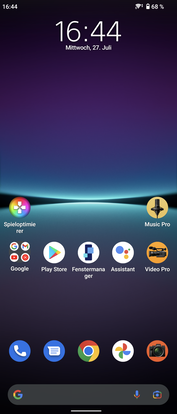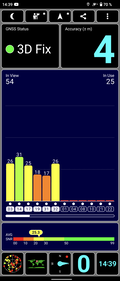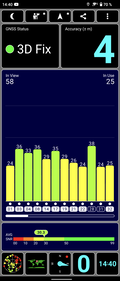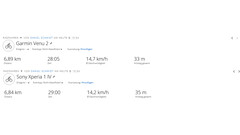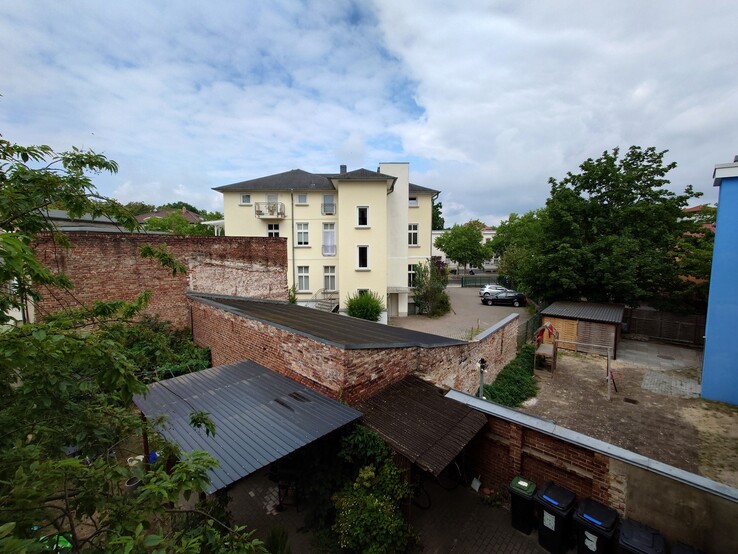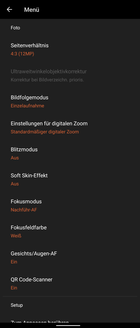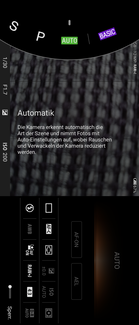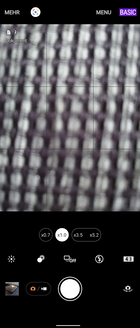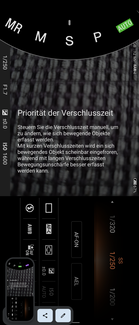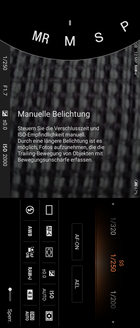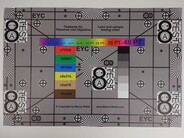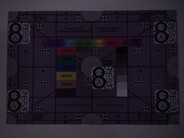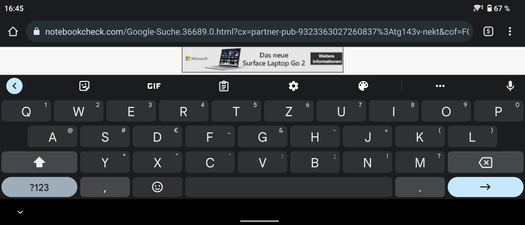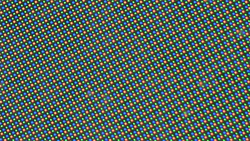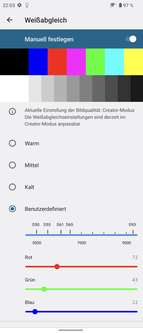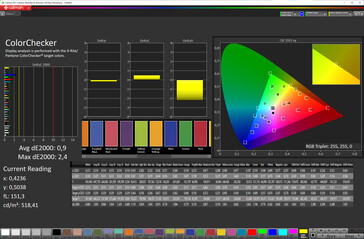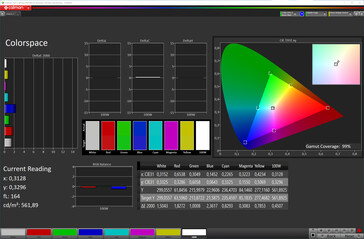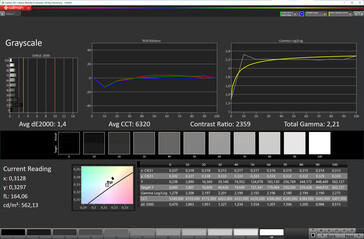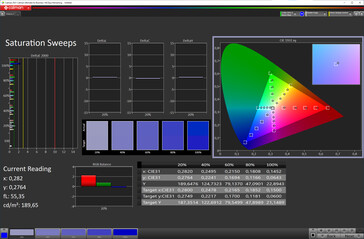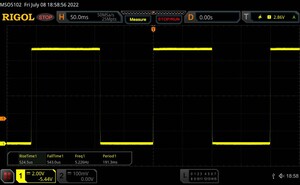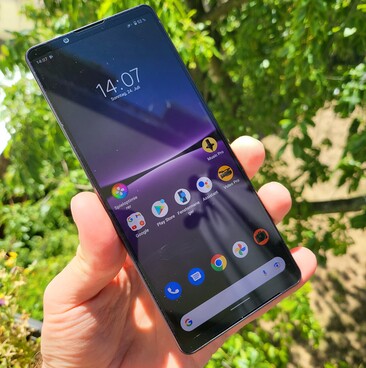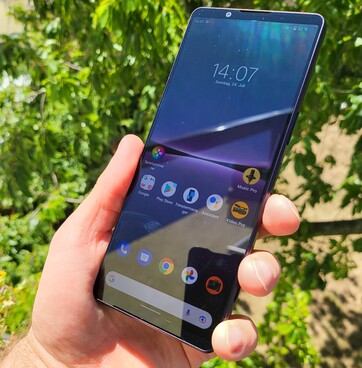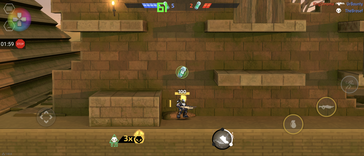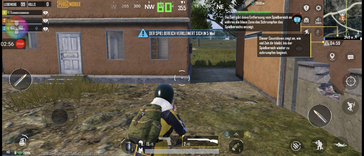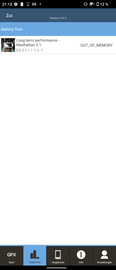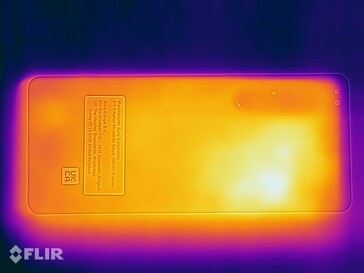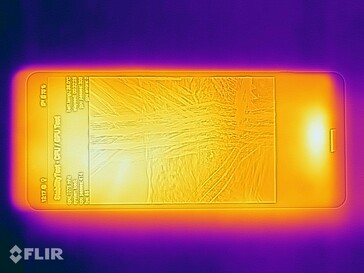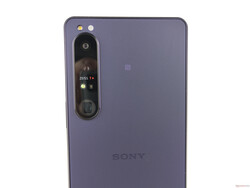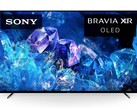Sony Xperia 1 IV review: The first smartphone with real optical zoom, 4K OLED & jack
After the dual telephoto lens of the Xperia 1 III, Sony is going one step further in its flagship for 2022. The Xperia 1 IV uses a periscope lens with a true variable optical zoom for the first time in a smartphone. In contrast to the Galaxy S22 Ultra, the Sony phone does not only use a fixed focal length for the zoom, but can continuously zoom in on the subject between 85 mm and 125 mm.
That said, the Xperia 1 IV offers more than just exceptional camera hardware. Sporting a 6.5-inch 21:9 OLED display with 4K resolution and 120 Hz, support for microSD cards and a 3.5 mm headphone jack, the Japanese flagship takes a slightly different route than its competitors in the high-end smartphone segment.
But the Xperia 1 IV does have one thing in common with the competition: its high price. The Sony smartphone with its Snapdragon 8 Gen 1 is largely available with 12 GB of RAM and 256 GB of storage for a RRP of between US$ 1250—1399 (depending on your location) and is thus around US$100 cheaper than its predecessor. In the US, a 512 GB variant is available for $1,599.99.
Possible Competitors in Comparison
Rating | Date | Model | Weight | Drive | Size | Resolution | Price |
|---|---|---|---|---|---|---|---|
| 87.7 % v7 (old) | 08 / 2022 | Sony Xperia 1 IV SD 8 Gen 1, Adreno 730 | 185 g | 256 GB UFS 3.1 Flash | 6.50" | 3840x1644 | |
| 89.2 % v7 (old) | 04 / 2022 | Oppo Find X5 Pro SD 8 Gen 1, Adreno 730 | 221 g | 256 GB UFS 3.1 Flash | 6.70" | 3216x1440 | |
| 89.4 % v7 (old) | 03 / 2022 | Samsung Galaxy S22 Ultra 5G Exynos 2200, Xclipse 920 | 228 g | 128 GB UFS 3.1 Flash | 6.80" | 3088x1440 | |
| 87.6 % v7 (old) | 02 / 2022 | Xiaomi 12 Pro SD 8 Gen 1, Adreno 730 | 204 g | 256 GB UFS 3.1 Flash | 6.73" | 3200x1440 | |
| 87.5 % v7 (old) | 08 / 2022 | ZTE Axon 40 Ultra SD 8 Gen 1, Adreno 730 | 204 g | 128 GB UFS 3.1 Flash | 6.80" | 2480x1116 | |
| 88.6 % v7 (old) | 07 / 2022 | Honor Magic4 Pro SD 8 Gen 1, Adreno 730 | 215 g | 256 GB UFS 3.1 Flash | 6.81" | 2848x1312 |
Case - Sony smartphone without a notch
The glass and metal case of the Xperia 1 IV leaves a strong impression with its very good build quality. For a flagship smartphone in 2022, the Xperia 1 IV is relatively light at 185 grams despite the high battery capacity of 5,000 mAh and is quite slim at 71 millimeters due to its elongated 21:9 display. However, the 8.2 millimeter thin and IP68-certified Gorilla Glass Victus sandwich case looks sharp-edged due to the flat black and is thus less ergonomic than other representatives in the high-end segment.
The flat 6.5-inch OLED panel is limited by thin lateral edges, but the size ratio between the display and the device's front only amounts to 84.2% because the upper and lower display edges are rather large. Samsung's Galaxy S22 Ultra, for example, uses the available surface much more efficiently at over 90 percent. At least Sony's flagship does not have a notch or a punch hole on the front.
Besides the usual volume and power buttons, the Xperia 1 IV has a dedicated shutter button that starts the camera app and can be used as a shutter release.
Equipment - Xperia 1 IV with 3.5 mm jack
With its Xperia 1 series, Sony continues to go unusual ways for a high-end phone. No other flagship smartphone offers a package consisting of a status LED, a 3.5 mm jack for headphones and an expansion of the internal memory via a microSD card. The latter has a capacity of 256 GB, although the actual available storage is lower at 219 GB due to the operating system and the preinstalled apps.
The 5,000 mAh battery is charged via the Type-C port with the USB 3.2 specification, which recognized external peripherals (such as memory sticks) without issue via USB OTG under testing. In addition, the USB port allows for image transfer (via USB-C to HDMI adapter cable) at a maximum of 4K60. Wireless transmission of display content to external monitors via Miracast or Google Cast is also possible. Video content from streaming services can be viewed in HD quality, since the smartphone has undergone the Widevine L1 certification process.
microSD Card Reader
The integrated microSD slot masters the current SDHC and SDXC standards up to 1 TB. In combination with our AV PRO V60 reference card, the microSD performance in the Cross Platform Disk Test is limited; the read rates in particular are low. The Xperia 1 IV's copy speed of less than 15 MB/s is also below average.
| SD Card Reader - average JPG Copy Test (av. of 3 runs) | |
| Sony Xperia Pro-I (Angelbird AV Pro V60) | |
| Sony Xperia 1 IV (Angelbird AV Pro V60) | |
Cross Platform Disk Test (CPDT)
Software - Sony smartphone with Android 12
The Xperia 1 IV ships with Android 12, which, according to Sony, will be provided with security updates and two Android upgrades for at least three years after the initial release. Considering the price range, this is very little. Samsung's top models for example, are supposed to receive new Android operating systems for four years and even five years of security updates in the future.
As usual, the Japanese manufacturer combines the Android system with its in-house user interface, Sony UI, version 5.71. During the review period, the security patches were from June 2022.
Communication & GNSS - Xperia 1 IV with WiFi 6E
For home WLAN, the Xperia 1 IV offers the fast 802.11ax standard with WiFi 6E, which ensured very high transfer rates in our measurements. We registered over 1700 MBit/s in the 6 GHz frequency band in combination with our Asus ROG Rapture GT-AXE11000 reference router. The smartphone also manages a very strong 1600 MBit/s in the 5 GHz frequency range. The values are stable overall, even if the start-up phase is lower in our measurements.
In addition to the fast WLAN, Sony's flagship also makes use of Bluetooth 5.2, dual-SIM and 5G (but without mmWave support) as well as an NFC chip for contactless payment. On top of the 5G standard, the Xperia 1 IV also supports access to a total of 24 LTE bands - all relevant LTE frequencies for the German-speaking region, including band 28, are covered. The Xperia phone is also well equipped for trips abroad, such as in the US.
| Networking | |
| Sony Xperia 1 IV | |
| iperf3 receive AXE11000 | |
| iperf3 transmit AXE11000 | |
| iperf3 transmit AXE11000 6GHz | |
| iperf3 receive AXE11000 6GHz | |
| Oppo Find X5 Pro | |
| iperf3 receive AXE11000 | |
| iperf3 transmit AXE11000 | |
| Samsung Galaxy S22 Ultra 5G | |
| iperf3 receive AXE11000 | |
| iperf3 transmit AXE11000 | |
| iperf3 transmit AXE11000 6GHz | |
| iperf3 receive AXE11000 6GHz | |
| Xiaomi 12 Pro | |
| iperf3 receive AXE11000 | |
| iperf3 transmit AXE11000 | |
| ZTE Axon 40 Ultra | |
| iperf3 receive AXE11000 | |
| iperf3 transmit AXE11000 | |
| Honor Magic4 Pro | |
| iperf3 receive AXE11000 | |
| iperf3 transmit AXE11000 | |
| Average of class Smartphone | |
| iperf3 receive AXE11000 | |
| iperf3 transmit AXE11000 | |
| iperf3 transmit AXE11000 6GHz | |
| iperf3 receive AXE11000 6GHz | |
In order to better assess positioning accuracy in everyday use, we took the Sony smartphone on a short trip and recorded the route in tandem with a Garmin Venue 2 for comparison purposes. The positioning module of the Xperia 1 IV uses satellite systems ranging from GPS (L1), GLONASS, QZSS to Galileo (E1) for localization, but only in single-band. The satellite-based supplementary system SBAS also comes into play
The Sony flagship's positioning capabilities are not always perfect. The deviations in the detailed view of the GPS record are quite significant for a high-end smartphone, so minor inaccuracies are often visible. But such deviations should not be a big issue for car navigation.
Telephony & Voice Quality - Sony Xperia 1 IV with dual SIM
There is little to criticize about the voice quality of the Xperia 1 IV. Voices are reproduced intelligibly and our conversation partner also characterized them as clear. Users who require dual-SIM functionality can connect an eSIM to Sony's flagship in addition to the physical nanoSIM card.
Thanks to Wi-Fi calling, the Xperia Phone can be used to make calls via the Wi-Fi network when mobile reception is limited. In addition, calls can be made via the LTE network using the VoLTE feature.
Cameras - Xperia 1 IV with triple cam
The 12 MP front-facing camera with its in-house IMX663 takes solid selfies, but they are relatively blurred. The exposure does not function well, especially in portrait mode, and bright areas of the image are overexposed. In addition, the subject appears very strongly "filtered" (i.e. "prettier") ex works.
The IMX557 is installed in the main camera, as in the predecessor. The lens are optically stabilized and offer good results in daylight, even if subjects are heavily resharpened. In dark surroundings, photos are reasonably illuminated, but with lots of noise and the image sharpness is not very pronounced - not really ideal for this price range. On the other hand, the image quality can still be optimized via the very extensive camera software. Like the Xperia 1 III, the current Xperia flagship not only offers numerous parameter adjustments, but also the well-known Alpha camera features, such as eye autofocus with real-time object tracking and continuous HDR shooting at 20 fps.
The highlight of the Sony flagship is clearly the variable periscope optics with loss-free zoom between 85 mm and 125 mm. Behind the variable telephoto lens is an optically stabilized 1/3.5-inch sensor that works steplessly between a magnification of 3.5x and 5.2x. However, we are not very impressed by the image quality. The sharpness could be much better and details are not accentuated either. Even an iPhone 13 Pro with the 5x hybrid zoom (3x optical) produces a sharper picture of our test subject than the Xperia 1 IV.
The 16 mm ultra-wide-angle camera of the Xperia 1 IV has good dynamics and a solid level of sharpness. However, the camera optics with EIS also produce some image flaws and other high-end smartphones offer more in terms of details.
Where Sony's flagship stands out is in videography, since all three lenses allow for recording up to 120 fps in UHD quality, and the front-facing camera now allows for 4K HDR videos. The Xperia 1 IV also offers the Videography Pro app known from the Xperia Pro-I for more professional videos and a wide array of adjustment settings. You can also switch between the lenses during a running video recording, but subjects with the main and ultra-wide-angle cameras are displayed much more warmly than with the periscope lens.
Image comparison
Choose a scene and navigate within the first image. One click changes the position on touchscreens. One click on the zoomed-in image opens the original in a new window. The first image shows the scaled photograph of the test device.
Wide angleWide angleLow LightUltra wide angleZoom 5xWe used ColorChecker passport to check the color calibration of the 12 MP main camera on the back under controlled lighting conditions. We analyzed color representation in comparison to the actual reference colors under standardized conditions - once in full studio lighting and once in 1 lux light intensity.
The colors are very well reproduced for a smartphone. No serious flaws are present: only two DeltaE deviations of over 10. However, the white balance still leaves room for improvement and black tones also have a gray haze.
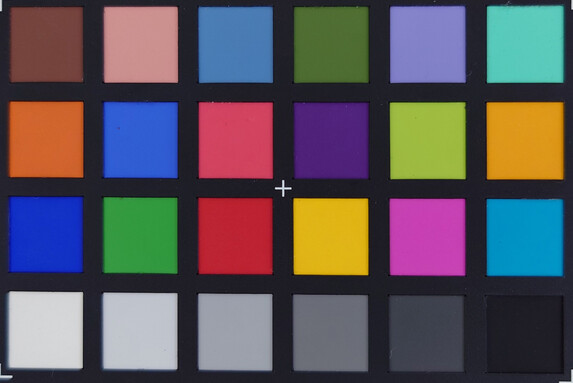
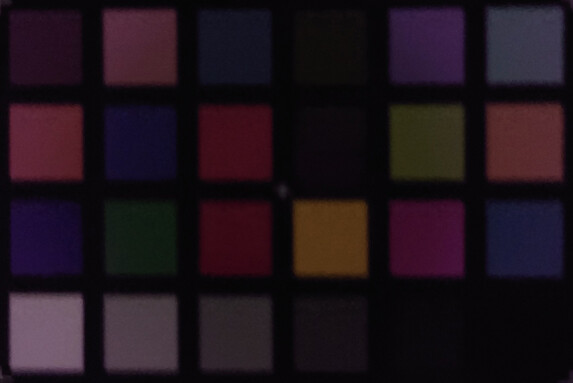
Accessories & Warranty - Sony smartphone without power adapter
Sony does not provide the matching 30-watt power adapter (RRP: ~US$50) together with its flagship smartphone upon purchase. A USB cable and the usual information material are included. Similar to the Xperia Pro-I, the Vlog Monitor (RRP: ~US$200) is offered as an accessory for the Xperia 1 IV, with which the rear-facing camera can be used for vlogging. In addition, the manufacturer's homepage offers a matching style cover with a stand (RRP: ~US$35) and a recording grip with wireless remote control (RRP: ~US$200).
Sony provides a 24-month warranty for the Xperia 1 IV in Germany. This may vary from region to region, so be sure to check with your supplier before purchasing.
Input Devices & Operation - Sony smartphone with 120 Hz
Inputs on the 6.5-inch OLED display are implemented swiftly and accurately right up to the corners of the touchscreen. A high refresh rate of 120 Hz also ensures buttery-smooth image changes when scrolling. The built-in vibration motor provides nice haptic feedback and makes typing very pleasant.
The Xperia 1 IV does not have an optical or ultrasound-based fingerprint sensor underneath the OLED screen. Instead, the fingers can be placed on the power button, where the biometric recognition functions quickly and very reliably. There is no face recognition unlock option via the front camera. Presumably, Sony considers a FaceUnlock function via 2D method to be unsecure.
Display - Xperia 1 IV with "4K"-Panel
The Xperia 1 IV possesses a 6.5-inch OLED screen with a resolution of 3840x1644 and a maximum refresh rate of 120 Hz. Users wanting to save energy can also run Sony's flagship at 60 Hz. However, the Xperia 1 IV does not offer adaptive adjustment like LTPO panels, which negatively impacts runtimes.
Not only the pixel density of over 600 ppi, but also the achieved luminance is very good. The high-end smartphone from Sony achieves an average of 890 cd/m² with a full white display. In the APL18 measurement, however, this drops slightly to 870 cd/m² - a Samsung Galaxy S22 Ultra achieves 1,788 cd/m² here. The panel of the Xperia 1 IV is thus bright enough for rendering HDR content, but not optimally suited.
Due to the OLED technology, we observed screen flickering that varies between 161 and 481 Hz. A DC dimming mode does not appear to be available in the settings.
| |||||||||||||||||||||||||
Brightness Distribution: 97 %
Center on Battery: 890 cd/m²
Contrast: ∞:1 (Black: 0 cd/m²)
ΔE ColorChecker Calman: 0.9 | ∀{0.5-29.43 Ø4.78}
ΔE Greyscale Calman: 1.4 | ∀{0.09-98 Ø5}
99% sRGB (Calman 2D)
Gamma: 2.21
CCT: 6320 K
| Sony Xperia 1 IV OLED, 3840x1644, 6.5" | Oppo Find X5 Pro AMOLED, 3216x1440, 6.7" | Samsung Galaxy S22 Ultra 5G Dynamic AMOLED, 3088x1440, 6.8" | Xiaomi 12 Pro AMOLED, 3200x1440, 6.7" | ZTE Axon 40 Ultra AMOLED, 2480x1116, 6.8" | Honor Magic4 Pro OLED, 2848x1312, 6.8" | |
|---|---|---|---|---|---|---|
| Screen | -2% | 6% | -12% | -53% | -68% | |
| Brightness middle (cd/m²) | 890 | 746 -16% | 1077 21% | 959 8% | 682 -23% | 956 7% |
| Brightness (cd/m²) | 897 | 744 -17% | 1093 22% | 977 9% | 683 -24% | 959 7% |
| Brightness Distribution (%) | 97 | 97 0% | 97 0% | 96 -1% | 94 -3% | 94 -3% |
| Black Level * (cd/m²) | ||||||
| Colorchecker dE 2000 * | 0.9 | 0.9 -0% | 1.2 -33% | 1.1 -22% | 1.8 -100% | 2.4 -167% |
| Colorchecker dE 2000 max. * | 2.4 | 1.6 33% | 2 17% | 3.1 -29% | 4.7 -96% | 5.2 -117% |
| Greyscale dE 2000 * | 1.4 | 1.6 -14% | 1.3 7% | 1.9 -36% | 2.4 -71% | 3.3 -136% |
| Gamma | 2.21 100% | 2.23 99% | 2.37 93% | 2.22 99% | 2.16 102% | 2.26 97% |
| CCT | 6320 103% | 6499 100% | 6526 100% | 6498 100% | 6634 98% | 6804 96% |
* ... smaller is better
Screen Flickering / PWM (Pulse-Width Modulation)
| Screen flickering / PWM detected | 480.5 Hz | ||
The display backlight flickers at 480.5 Hz (worst case, e.g., utilizing PWM) . The frequency of 480.5 Hz is relatively high, so most users sensitive to PWM should not notice any flickering. However, there are reports that some users are still sensitive to PWM at 500 Hz and above, so be aware. In comparison: 53 % of all tested devices do not use PWM to dim the display. If PWM was detected, an average of 8108 (minimum: 5 - maximum: 343500) Hz was measured. | |||
Series of measurements with fixed zoom level and different brightness settings
Sony's UI of the Xperia 1 IV offers a manual white balance as well as the well-known "Creator Mode" that is compatible with the large BT.2020 color space and 10-bit colors. In addition, the standard mode for individually configurable apps can be expanded with the BT.2020 color gamut, which means that compared to other standards, a significantly larger part of the color spectrum perceptible to humans is supported.
We examined the color calibration of the OLED panel with the CalMAN analysis software. In Creator mode, the sRGB color space is almost completely covered. The large color space may only be supported in certain applications (video editing, etc.). The DeltaE values indicate minor deviations in the colors, only minimal differences can be seen in the blue tones. The representation of grayscale is also very accurate.
Display Response Times
| ↔ Response Time Black to White | ||
|---|---|---|
| 1.07 ms ... rise ↗ and fall ↘ combined | ↗ 0.5245 ms rise | |
| ↘ 0.543 ms fall | ||
| The screen shows very fast response rates in our tests and should be very well suited for fast-paced gaming. In comparison, all tested devices range from 0.1 (minimum) to 240 (maximum) ms. » 4 % of all devices are better. This means that the measured response time is better than the average of all tested devices (20.2 ms). | ||
| ↔ Response Time 50% Grey to 80% Grey | ||
| 1.75 ms ... rise ↗ and fall ↘ combined | ↗ 0.5745 ms rise | |
| ↘ 1.17 ms fall | ||
| The screen shows very fast response rates in our tests and should be very well suited for fast-paced gaming. In comparison, all tested devices range from 0.165 (minimum) to 636 (maximum) ms. » 8 % of all devices are better. This means that the measured response time is better than the average of all tested devices (31.6 ms). | ||
The Xperia phone is well equipped for outdoor use. Its high brightness stands up well to bright ambient light. Only the highly reflective surface prevents better readability in direct sunlight. Unfortunately, the Xperia 1 IV does not have the large brightness reserves of a Galaxy S22 Ultra.
The viewing-angle stability of the AMOLED display is very good. The typical brightness drop is seen at flat viewing angles, and we also noticed a faint purple haze on the OLED panel.
Performance - Sony smartphone with Snapdragon SoC
Sony uses Qualcomm Snapdragon 8 Gen 1 for its flagship. The 4nm SoC is based on a cryo-CPU consisting of three clusters, which constitute a prime core (Cortex X2), three performance cores (Cortex A710) and four power-saving units (Cortex A510). The CPU unit can also make use of the integrated Adreno 730 for graphics processing.
As expected, the Snapdragon 8 Gen1 in the Xperia 1 IV performs very well in our battery of benchmark tests. The smartphone did not deploy overheating protection under prolonged load, even in summer temperatures, and all benchmark tests ran smoothly. Compared to the Qualcomm-equipped competition, the Xperia 1 IV is inconspicuous in the CPU tests. Only the Antutu V9 score is quite low.
| AImark - Score v2.x | |
| Xiaomi 12 Pro | |
| Average Qualcomm Snapdragon 8 Gen 1 (1046 - 96317, n=14) | |
| Honor Magic4 Pro | |
| ZTE Axon 40 Ultra | |
| Sony Xperia 1 IV | |
| Samsung Galaxy S22 Ultra 5G | |
| Oppo Find X5 Pro | |
In the graphics tests, the Xperia 1 IV is clearly below the values of a Xiaomi 12 Pro. That the onscreen results would be lower due to the 4K panel was to be expected, but the large gap in the GFX benchmark offscreen values was not. The waste heat of Sony's flagship seems to have a negative impact here.
GFXBench (DX / GLBenchmark) 2.7: T-Rex Onscreen | 1920x1080 T-Rex Offscreen
GFXBench 3.0: on screen Manhattan Onscreen OGL | 1920x1080 1080p Manhattan Offscreen
GFXBench 3.1: on screen Manhattan ES 3.1 Onscreen | 1920x1080 Manhattan ES 3.1 Offscreen
GFXBench: on screen Car Chase Onscreen | 1920x1080 Car Chase Offscreen | on screen Aztec Ruins High Tier Onscreen | 2560x1440 Aztec Ruins High Tier Offscreen | on screen Aztec Ruins Normal Tier Onscreen | 1920x1080 Aztec Ruins Normal Tier Offscreen
| 3DMark / Wild Life Extreme Unlimited | |
| Honor Magic4 Pro | |
| Oppo Find X5 Pro | |
| Xiaomi 12 Pro | |
| ZTE Axon 40 Ultra | |
| Sony Xperia 1 IV | |
| Samsung Galaxy S22 Ultra 5G | |
| 3DMark / Wild Life Extreme | |
| Honor Magic4 Pro | |
| Xiaomi 12 Pro | |
| Oppo Find X5 Pro | |
| ZTE Axon 40 Ultra | |
| Sony Xperia 1 IV | |
| Samsung Galaxy S22 Ultra 5G | |
| 3DMark / Wild Life Unlimited Score | |
| Xiaomi 12 Pro | |
| Honor Magic4 Pro | |
| Oppo Find X5 Pro | |
| ZTE Axon 40 Ultra | |
| Sony Xperia 1 IV | |
| Samsung Galaxy S22 Ultra 5G | |
| 3DMark / Wild Life Score | |
| Xiaomi 12 Pro | |
| Oppo Find X5 Pro | |
| Sony Xperia 1 IV | |
| Samsung Galaxy S22 Ultra 5G | |
| Honor Magic4 Pro | |
| ZTE Axon 40 Ultra | |
| 3DMark / Sling Shot Extreme (Vulkan) Unlimited Physics | |
| ZTE Axon 40 Ultra | |
| 3DMark / Sling Shot Extreme (Vulkan) Unlimited Graphics | |
| ZTE Axon 40 Ultra | |
| 3DMark / Sling Shot Extreme (Vulkan) Unlimited | |
| ZTE Axon 40 Ultra | |
| 3DMark / Sling Shot Extreme (ES 3.1) Unlimited Physics | |
| Xiaomi 12 Pro | |
| ZTE Axon 40 Ultra | |
| Samsung Galaxy S22 Ultra 5G | |
| Oppo Find X5 Pro | |
| Honor Magic4 Pro | |
| Sony Xperia 1 IV | |
| 3DMark / Sling Shot Extreme (ES 3.1) Unlimited Graphics | |
| Honor Magic4 Pro | |
| Oppo Find X5 Pro | |
| ZTE Axon 40 Ultra | |
| Xiaomi 12 Pro | |
| Samsung Galaxy S22 Ultra 5G | |
| Sony Xperia 1 IV | |
| 3DMark / Sling Shot Extreme (ES 3.1) Unlimited | |
| Oppo Find X5 Pro | |
| Honor Magic4 Pro | |
| Xiaomi 12 Pro | |
| ZTE Axon 40 Ultra | |
| Samsung Galaxy S22 Ultra 5G | |
| Sony Xperia 1 IV | |
| 3DMark / Sling Shot OpenGL ES 3.0 Physics | |
| ZTE Axon 40 Ultra | |
| 3DMark / Sling Shot OpenGL ES 3.0 Graphics | |
| ZTE Axon 40 Ultra | |
| 3DMark / Sling Shot OpenGL ES 3.0 | |
| ZTE Axon 40 Ultra | |
| 3DMark / Sling Shot Extreme (ES 3.1) | |
| ZTE Axon 40 Ultra | |
| 3DMark / Sling Shot Extreme (ES 3.1) Graphics | |
| ZTE Axon 40 Ultra | |
| 3DMark / Sling Shot Extreme (ES 3.1) Physics | |
| ZTE Axon 40 Ultra | |
| 3DMark / Sling Shot OpenGL ES 3.0 Unlimited | |
| Oppo Find X5 Pro | |
| Honor Magic4 Pro | |
| ZTE Axon 40 Ultra | |
| Xiaomi 12 Pro | |
| Samsung Galaxy S22 Ultra 5G | |
| Sony Xperia 1 IV | |
| 3DMark / Sling Shot OpenGL ES 3.0 Unlimited Graphics | |
| Honor Magic4 Pro | |
| Oppo Find X5 Pro | |
| Xiaomi 12 Pro | |
| ZTE Axon 40 Ultra | |
| Samsung Galaxy S22 Ultra 5G | |
| Sony Xperia 1 IV | |
| 3DMark / Sling Shot OpenGL ES 3.0 Unlimited Physics | |
| Oppo Find X5 Pro | |
| ZTE Axon 40 Ultra | |
| Xiaomi 12 Pro | |
| Samsung Galaxy S22 Ultra 5G | |
| Honor Magic4 Pro | |
| Sony Xperia 1 IV | |
| GFXBench (DX / GLBenchmark) 2.7 / T-Rex Onscreen | |
| Xiaomi 12 Pro | |
| Honor Magic4 Pro | |
| Samsung Galaxy S22 Ultra 5G | |
| ZTE Axon 40 Ultra | |
| Sony Xperia 1 IV | |
| Oppo Find X5 Pro | |
| GFXBench (DX / GLBenchmark) 2.7 / T-Rex Offscreen | |
| Honor Magic4 Pro | |
| ZTE Axon 40 Ultra | |
| Xiaomi 12 Pro | |
| Oppo Find X5 Pro | |
| Sony Xperia 1 IV | |
| Samsung Galaxy S22 Ultra 5G | |
| GFXBench 3.0 / Manhattan Onscreen OGL | |
| ZTE Axon 40 Ultra | |
| Xiaomi 12 Pro | |
| Honor Magic4 Pro | |
| Samsung Galaxy S22 Ultra 5G | |
| Sony Xperia 1 IV | |
| Oppo Find X5 Pro | |
| GFXBench 3.0 / 1080p Manhattan Offscreen | |
| Xiaomi 12 Pro | |
| ZTE Axon 40 Ultra | |
| Samsung Galaxy S22 Ultra 5G | |
| Honor Magic4 Pro | |
| Oppo Find X5 Pro | |
| Sony Xperia 1 IV | |
| GFXBench 3.1 / Manhattan ES 3.1 Onscreen | |
| ZTE Axon 40 Ultra | |
| Honor Magic4 Pro | |
| Xiaomi 12 Pro | |
| Samsung Galaxy S22 Ultra 5G | |
| Sony Xperia 1 IV | |
| Oppo Find X5 Pro | |
| GFXBench 3.1 / Manhattan ES 3.1 Offscreen | |
| Xiaomi 12 Pro | |
| Honor Magic4 Pro | |
| Samsung Galaxy S22 Ultra 5G | |
| ZTE Axon 40 Ultra | |
| Sony Xperia 1 IV | |
| Oppo Find X5 Pro | |
| GFXBench / Car Chase Onscreen | |
| ZTE Axon 40 Ultra | |
| Honor Magic4 Pro | |
| Sony Xperia 1 IV | |
| Samsung Galaxy S22 Ultra 5G | |
| Oppo Find X5 Pro | |
| Xiaomi 12 Pro | |
| GFXBench / Car Chase Offscreen | |
| Honor Magic4 Pro | |
| Xiaomi 12 Pro | |
| ZTE Axon 40 Ultra | |
| Samsung Galaxy S22 Ultra 5G | |
| Sony Xperia 1 IV | |
| Oppo Find X5 Pro | |
| GFXBench / Aztec Ruins High Tier Onscreen | |
| ZTE Axon 40 Ultra | |
| Sony Xperia 1 IV | |
| Honor Magic4 Pro | |
| Oppo Find X5 Pro | |
| Samsung Galaxy S22 Ultra 5G | |
| Xiaomi 12 Pro | |
| GFXBench / Aztec Ruins High Tier Offscreen | |
| Honor Magic4 Pro | |
| Oppo Find X5 Pro | |
| Xiaomi 12 Pro | |
| ZTE Axon 40 Ultra | |
| Samsung Galaxy S22 Ultra 5G | |
| Sony Xperia 1 IV | |
| GFXBench / Aztec Ruins Normal Tier Onscreen | |
| ZTE Axon 40 Ultra | |
| Honor Magic4 Pro | |
| Sony Xperia 1 IV | |
| Oppo Find X5 Pro | |
| Xiaomi 12 Pro | |
| Samsung Galaxy S22 Ultra 5G | |
| GFXBench / Aztec Ruins Normal Tier Offscreen | |
| Honor Magic4 Pro | |
| Oppo Find X5 Pro | |
| Xiaomi 12 Pro | |
| ZTE Axon 40 Ultra | |
| Sony Xperia 1 IV | |
| Samsung Galaxy S22 Ultra 5G | |
The Xperia 1 IV makes an excellent impression in everyday use as well as during browsing, since thermal issues are insignificant here. System performance and benchmark values are first class.
| Jetstream 2 - 2.0 Total Score | |
| Average of class Smartphone (23.8 - 387, n=149, last 2 years) | |
| ZTE Axon 40 Ultra (Chrome 103.0.5060.71) | |
| Sony Xperia 1 IV (Chrome 103) | |
| Average Qualcomm Snapdragon 8 Gen 1 (72.8 - 134.6, n=16) | |
| Oppo Find X5 Pro (Chrome 99) | |
| Samsung Galaxy S22 Ultra 5G (Chrome 99) | |
| Xiaomi 12 Pro (Chrome 97) | |
| Honor Magic4 Pro (Chrome 102) | |
| Speedometer 2.0 - Result 2.0 | |
| Average of class Smartphone (15.2 - 643, n=122, last 2 years) | |
| ZTE Axon 40 Ultra (Chrome 103.0.5060.71) | |
| Sony Xperia 1 IV (Chrome 103) | |
| Samsung Galaxy S22 Ultra 5G (Chrome 99) | |
| Oppo Find X5 Pro (Chrome 99) | |
| Average Qualcomm Snapdragon 8 Gen 1 (64.4 - 129.3, n=16) | |
| Xiaomi 12 Pro (Chrome 97) | |
| Honor Magic4 Pro (Chrome 102) | |
| WebXPRT 3 - Overall | |
| Average of class Smartphone (38 - 380, n=31, last 2 years) | |
| Sony Xperia 1 IV (Chrome 103) | |
| Average Qualcomm Snapdragon 8 Gen 1 (79 - 193, n=15) | |
| Oppo Find X5 Pro (Chrome 99) | |
| Samsung Galaxy S22 Ultra 5G (Chrome 99) | |
| Xiaomi 12 Pro (Chrome 97) | |
| Honor Magic4 Pro (Chrome 102) | |
| ZTE Axon 40 Ultra (Chrome 103.0.5060.71) | |
| Octane V2 - Total Score | |
| Average of class Smartphone (2228 - 121337, n=197, last 2 years) | |
| ZTE Axon 40 Ultra (Chrome 103.0.5060.71) | |
| Sony Xperia 1 IV (Chrome 103) | |
| Average Qualcomm Snapdragon 8 Gen 1 (27730 - 50626, n=17) | |
| Oppo Find X5 Pro (Chrome 99) | |
| Samsung Galaxy S22 Ultra 5G (Chrome 99) | |
| Xiaomi 12 Pro (Chrome 97) | |
| Honor Magic4 Pro (Chrome 102) | |
| Mozilla Kraken 1.1 - Total | |
| Honor Magic4 Pro (Chrome 102) | |
| Xiaomi 12 Pro (Chrome 97) | |
| Samsung Galaxy S22 Ultra 5G (Chrome 99) | |
| Average of class Smartphone (257 - 28190, n=154, last 2 years) | |
| Oppo Find X5 Pro (Chrome 99) | |
| Average Qualcomm Snapdragon 8 Gen 1 (814 - 1440, n=16) | |
| Sony Xperia 1 IV (Chrome 103) | |
| ZTE Axon 40 Ultra (Chrome 103.0.5060.71) | |
* ... smaller is better
The write and read rates of the UFS storage in Sony's flagship are on par with other competing high-end smartphones. The read speed in particular is very strong at almost 2,000 MB/s.
| Sony Xperia 1 IV | Oppo Find X5 Pro | Samsung Galaxy S22 Ultra 5G | Xiaomi 12 Pro | ZTE Axon 40 Ultra | Honor Magic4 Pro | Average 256 GB UFS 3.1 Flash | Average of class Smartphone | |
|---|---|---|---|---|---|---|---|---|
| AndroBench 3-5 | -33% | -10% | 11% | -11% | 1% | -6% | 15% | |
| Sequential Read 256KB (MB/s) | 1982.56 | 1410 -29% | 1653 -17% | 1620 -18% | 1638.15 -17% | 1868.5 -6% | 1757 ? -11% | 2228 ? 12% |
| Sequential Write 256KB (MB/s) | 1262.21 | 894 -29% | 1074 -15% | 1465 16% | 1065.13 -16% | 1367.48 8% | 1204 ? -5% | 1851 ? 47% |
| Random Read 4KB (MB/s) | 293.95 | 183.7 -38% | 322.3 10% | 324.9 11% | 313.35 7% | 268.76 -9% | 287 ? -2% | 296 ? 1% |
| Random Write 4KB (MB/s) | 334.19 | 210.4 -37% | 273.1 -18% | 448.9 34% | 273.19 -18% | 366.13 10% | 318 ? -5% | 337 ? 1% |
Games - Sony smartphone manages 60 fps
Sony also thought of gamers, providing a touch sampling rate of 240 Hz, a game optimizer, and the Snapdragon Elite gaming features. In addition to the benchmark tests, we checked the Xperia 1 IV's graphics performance with Android games from the Play Store. Frame rates were logged during gaming sessions with the GameBench tool.
In good display quality (HD), PUBG Mobile is consistently rendered at 60 fps. A very solid 40 fps also makes it playable in UltraHD. Strong drops in the frame rate are not really noticeable, even under the highest graphics settings. However, the values for Armajet are surprisingly weak, probably due to a limitation on the part of the Japanese manufacturer. Here we would have expected over 100 frames per second, at least for a short time.
Emissions - Xperia 1 IV gets warm
Temperature
The case's surface temperatures of over 40 °C are clearly noticeable. We used the 3DMark stress test to check how consistently the Xperia 1 IV performs. In both test scenarios, the Snapdragon 8 Gen 1 throttles significantly - as does the Qualcomm competition. A reduction in the refresh rate also occurs under high load, which could become a problem during long gaming sessions.
(±) The maximum temperature on the upper side is 40.3 °C / 105 F, compared to the average of 35.2 °C / 95 F, ranging from 21.9 to 247 °C for the class Smartphone.
(+) The bottom heats up to a maximum of 37.9 °C / 100 F, compared to the average of 34 °C / 93 F
(+) In idle usage, the average temperature for the upper side is 31.7 °C / 89 F, compared to the device average of 32.9 °C / 91 F.
3DMark Wild Life Stress Test
| 3DMark | |
| Wild Life Stress Test Stability | |
| Oppo Find X5 Pro | |
| Sony Xperia 1 IV | |
| Samsung Galaxy S22 Ultra 5G | |
| Xiaomi 12 Pro | |
| Wild Life Extreme Stress Test | |
| Oppo Find X5 Pro | |
| Sony Xperia 1 IV | |
| Samsung Galaxy S22 Ultra 5G | |
| Xiaomi 12 Pro | |
Speakers
The stereo speakers of the Xperia 1 IV sound very good and are sufficiently loud. In addition to High-Res Audio, DSSE Ultimate and 360 Reality Audio, users are offered Music Pro, a recording service that can be used to record music without any external equipment. In the case of the latter, however, the cloud-based audio functions are subscription-based.
Music output via the two front-firing speakers hardly has any bass, but the mids are linear. Dips can be seen in the pink noise diagram in the super high tones.
The audio jack of the Xperia 1 IV offers a solid noise level with an SNR value of 81. Music playback via Bluetooth 5.2 is made possible by codecs ranging from SBC, AAC aptX, AAC, LHDC to LDAC.
Sony Xperia 1 IV audio analysis
(+) | speakers can play relatively loud (86.7 dB)
Bass 100 - 315 Hz
(-) | nearly no bass - on average 22.1% lower than median
(±) | linearity of bass is average (10% delta to prev. frequency)
Mids 400 - 2000 Hz
(+) | balanced mids - only 3.8% away from median
(+) | mids are linear (4.5% delta to prev. frequency)
Highs 2 - 16 kHz
(+) | balanced highs - only 3.4% away from median
(+) | highs are linear (3.5% delta to prev. frequency)
Overall 100 - 16.000 Hz
(±) | linearity of overall sound is average (15.5% difference to median)
Compared to same class
» 4% of all tested devices in this class were better, 3% similar, 94% worse
» The best had a delta of 11%, average was 35%, worst was 134%
Compared to all devices tested
» 22% of all tested devices were better, 4% similar, 74% worse
» The best had a delta of 4%, average was 24%, worst was 134%
Samsung Galaxy S22 Ultra 5G audio analysis
(+) | speakers can play relatively loud (90.2 dB)
Bass 100 - 315 Hz
(-) | nearly no bass - on average 24.4% lower than median
(±) | linearity of bass is average (8.8% delta to prev. frequency)
Mids 400 - 2000 Hz
(±) | higher mids - on average 6.3% higher than median
(+) | mids are linear (4.8% delta to prev. frequency)
Highs 2 - 16 kHz
(±) | higher highs - on average 5.6% higher than median
(+) | highs are linear (4.1% delta to prev. frequency)
Overall 100 - 16.000 Hz
(±) | linearity of overall sound is average (18.5% difference to median)
Compared to same class
» 20% of all tested devices in this class were better, 9% similar, 71% worse
» The best had a delta of 11%, average was 35%, worst was 134%
Compared to all devices tested
» 41% of all tested devices were better, 8% similar, 52% worse
» The best had a delta of 4%, average was 24%, worst was 134%
Battery life - Sony phone with wireless charging
Power Consumption
The 5,000 mAh battery only charges at a maximum of 30 watts via USB-C-PD and wirelessly at a maximum of 15 watts. The power consumption is not particularly efficient, but not conspicuously high either. At an average of 1.7 watts, we still see room for improvement, particularly when idling.
| Off / Standby | |
| Idle | |
| Load |
|
Key:
min: | |
| Sony Xperia 1 IV 5000 mAh | Oppo Find X5 Pro 5000 mAh | Samsung Galaxy S22 Ultra 5G 5000 mAh | Xiaomi 12 Pro 4600 mAh | ZTE Axon 40 Ultra 5000 mAh | Honor Magic4 Pro 4600 mAh | Average Qualcomm Snapdragon 8 Gen 1 | Average of class Smartphone | |
|---|---|---|---|---|---|---|---|---|
| Power Consumption | 15% | 15% | 12% | 10% | -1% | -12% | -3% | |
| Idle Minimum * (Watt) | 1.06 | 1.24 -17% | 0.58 45% | 0.94 11% | 0.88 17% | 0.87 18% | 1.255 ? -18% | 0.842 ? 21% |
| Idle Average * (Watt) | 1.71 | 1.39 19% | 0.71 58% | 1.24 27% | 1.57 8% | 2.04 -19% | 2.02 ? -18% | 1.439 ? 16% |
| Idle Maximum * (Watt) | 1.89 | 1.42 25% | 1.16 39% | 1.34 29% | 1.6 15% | 2.26 -20% | 2.21 ? -17% | 1.624 ? 14% |
| Load Average * (Watt) | 4.99 | 3.58 28% | 7.07 -42% | 5.7 -14% | 5.06 -1% | 4.97 -0% | 5.49 ? -10% | 7.03 ? -41% |
| Load Maximum * (Watt) | 8.91 | 6.99 22% | 11.32 -27% | 8.12 9% | 7.91 11% | 7.46 16% | 8.75 ? 2% | 11.3 ? -27% |
* ... smaller is better
Power Consumption: Geekbench (150 cd/m²)
Power Consumption: GFXBench (150 cd/m²)
Battery Life
The runtimes of the Xperia 1 IV are not very long due to the permanent 120 Hz and high resolution. Our comparison devices are best compared with an adjusted display brightness of 150 cd/m². In the practical WLAN test, Sony's flagship manages only 7 hours and 10.5 hours with the WLAN module disabled during unending video playback.
The Xperia 1 IV also has below-average endurance values under full load, but the differences to an Oppo Find X5 Pro or Xiaomi 12 Pro are not so significant. Users who take a lot of pictures with Sony's flagship and play the occasional Android game during the day will not be able to avoid intermediate recharging of the 5,000 mAh battery.
| Sony Xperia 1 IV 5000 mAh | Oppo Find X5 Pro 5000 mAh | Samsung Galaxy S22 Ultra 5G 5000 mAh | Xiaomi 12 Pro 4600 mAh | ZTE Axon 40 Ultra 5000 mAh | Honor Magic4 Pro 4600 mAh | |
|---|---|---|---|---|---|---|
| Battery runtime | 54% | 77% | 56% | 102% | 47% | |
| Reader / Idle (h) | 16.3 | 21.2 30% | 32.9 102% | 33.9 108% | 40.8 150% | 22.4 37% |
| H.264 (h) | 10.6 | 19 79% | 18 70% | 13.1 24% | 24.5 131% | 16.6 57% |
| WiFi v1.3 (h) | 7.1 | 13.1 85% | 14.1 99% | 12.8 80% | 16.3 130% | 11.5 62% |
| Load (h) | 5 | 6.1 22% | 6.8 36% | 5.6 12% | 4.9 -2% | 6.5 30% |
Pros
Cons
Verdict on the Sony Xperia 1 IV
The Xperia 1 IV is the individualist in the high-end smartphone segment. Sony's flagship is high-quality and very well equipped, but it does not perform on the same level as the Samsung Galaxy S22 Ultra or the Oppo Find X5 Pro in certain areas (camera, battery life, display brightness). On the other hand, the Xperia 1 IV caters to a niche for fans of a 3.5 mm jack and memory expansion - at least in this price range. Moreover, Sony throws in the near-forgotten status LED on top. The very nice OLED panel with its high resolution is also a unique selling point of the Xperia 1 IV, but it has to concede defeat to the LTPO competition, such as the Xiaomi 12 Pro, in terms of brightness and energy efficiency.
The Xperia 1 IV does a lot things differently than the competition.
Thanks to the high-quality cameras and the extensive software, users are very flexibly equipped, especially in the field of video recording. Furthermore, vloggers will benefit from an extensive range of adjustable settings in combination with the optional accessories, which again caters to a niche market. However, the Xperia 1 IV is less suitable for point-and-shoot pictures than the competition because the photos in automatic mode are only partially satisfactory - the variable zoom in particular is somewhat disappointing. Users who only want to press the shutter button will not be satisfied with the results of the Xperia 1 IV.
Price and Availability
In the US, the 512 GB variant of the Sony Xperia 1 IV is available on pre-order via Amazon for $1,599.99.
Otherwise, the availability of the Sony Xperia 1 IV appears to vary from location to location. We found, for example, that our reviewed configuration is available via Amazon UK for £1,299.00, Amazon France for 1 398,98€ and Amazon Spain for 1.249,00€. Searches via Amazon's websites in Canada, India and Australia proved unsuccessful, though this does not mean that the smartphone is not available via other distributors.
Prices are as of 06.08.2022 and are subject to change.
Sony Xperia 1 IV
- 08/30/2022 v7 (old)
Marcus Herbrich





